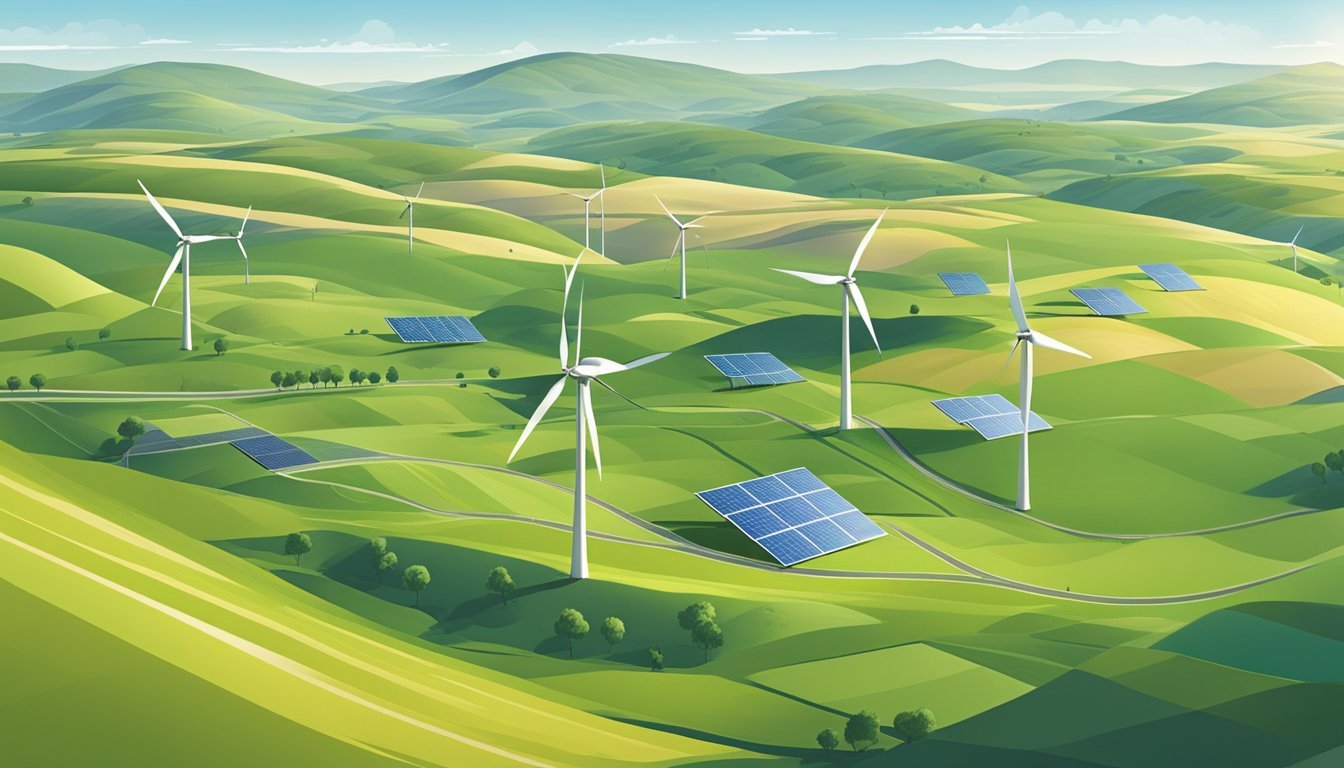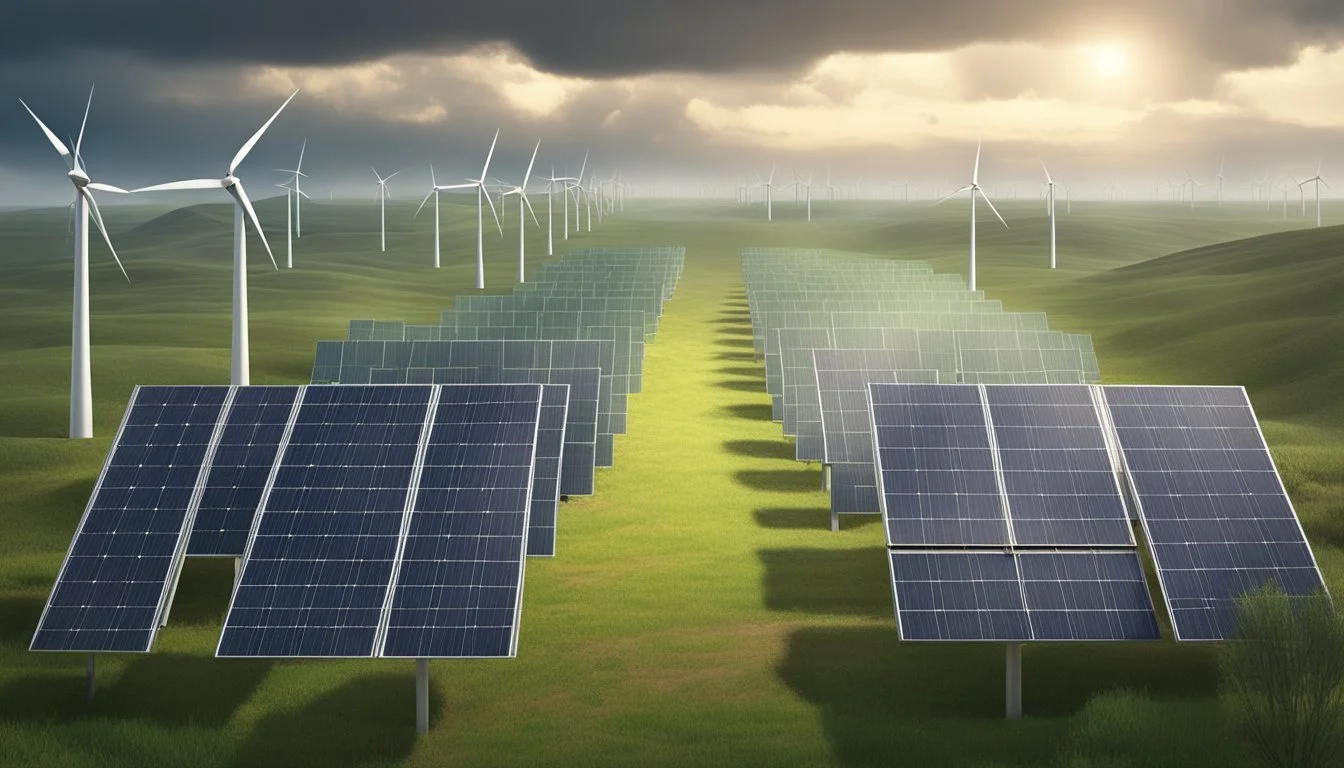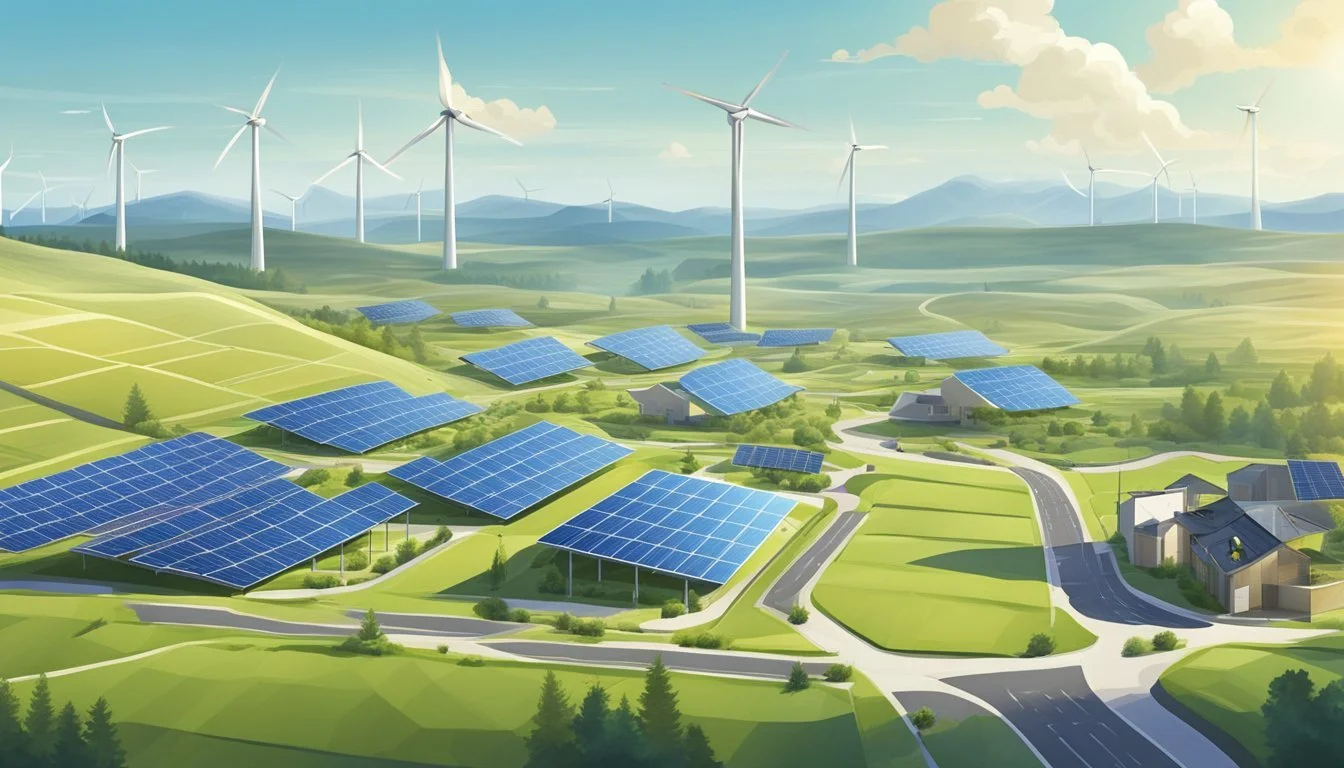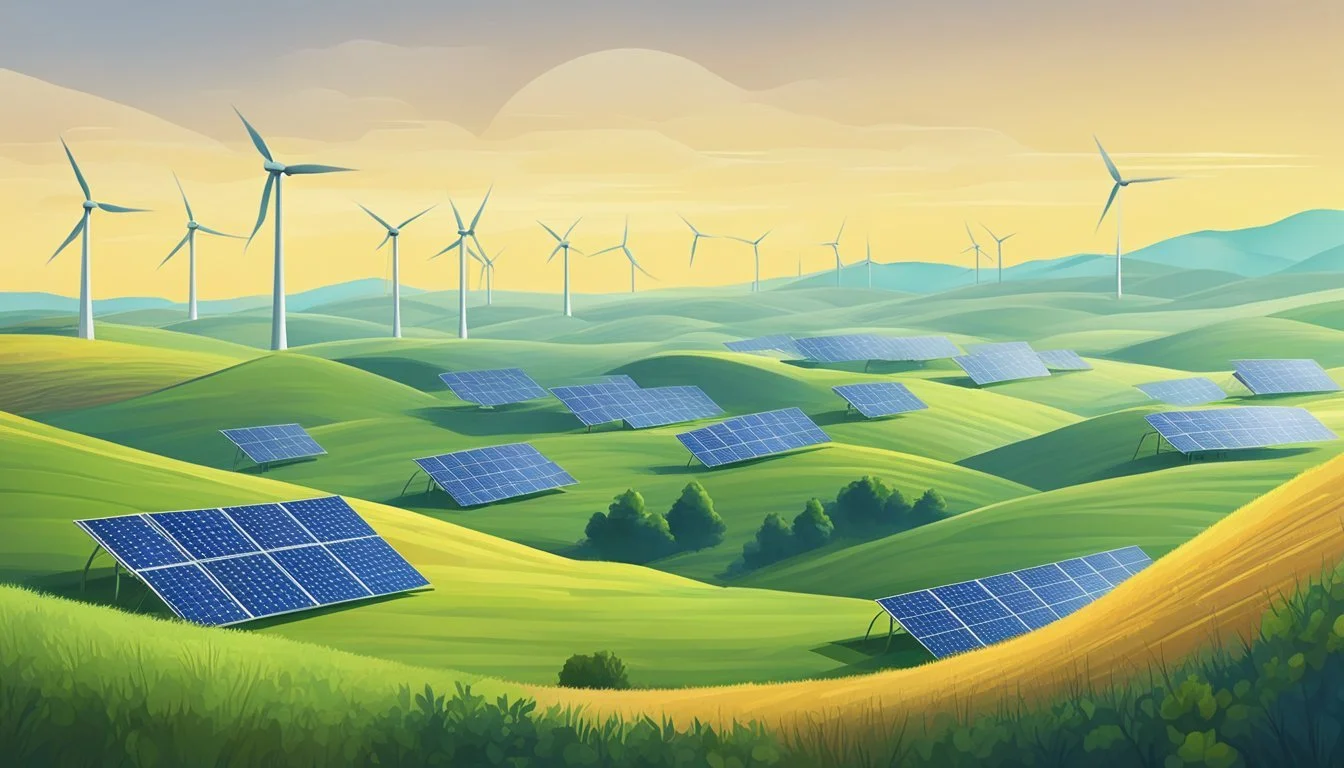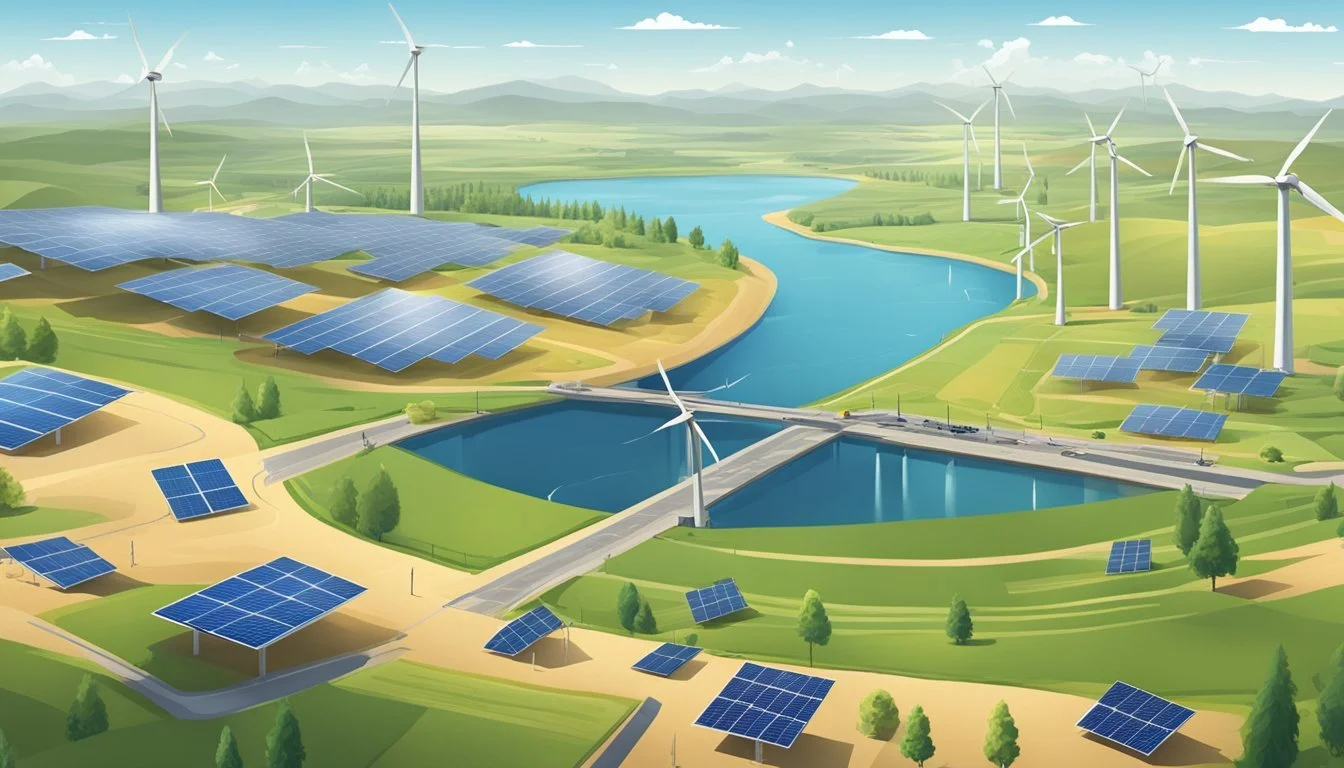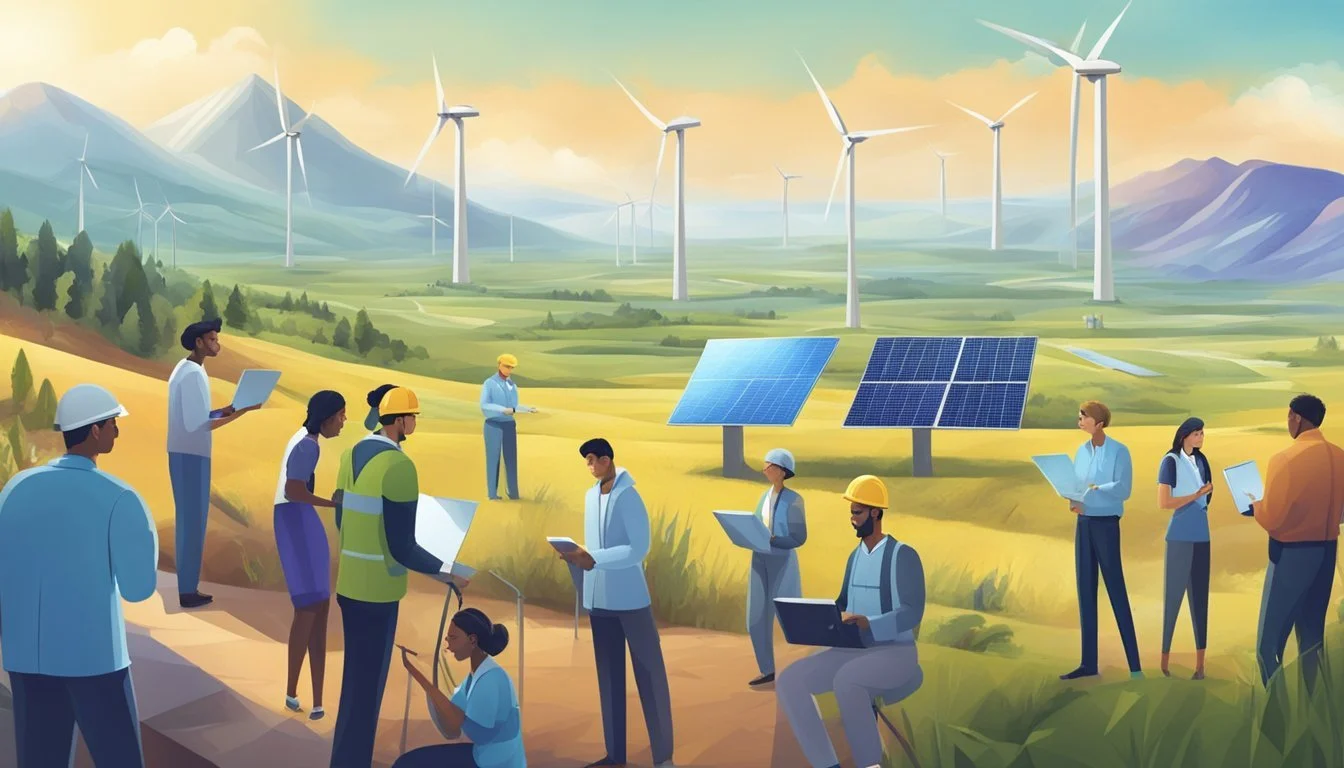Free Land for Renewable Energy Projects
Opportunities and Guidelines
For those passionate about building a sustainable future, the concept of free land for renewable energy projects is an enticing opportunity. Governments and organizations worldwide recognize the need to transition to clean energy sources such as solar, wind, and geothermal. The Bureau of Land Management (BLM) in the United States has taken significant steps to ensure the availability of public lands for developing these renewable energy projects, providing a fertile ground for innovation and sustainable development.
The BLM has already permitted numerous projects, including 69 geothermal, 54 solar, and 41 wind projects, demonstrating a robust commitment to expanding clean energy (Renewable Energy | Bureau of Land Management, 2024). This allows developers to utilize vast expanses of federal land, potentially leading to significant advancements in renewable energy infrastructure. Developers can leverage these opportunities to contribute to a more sustainable and energy-efficient future.
Coupled with the benefits of reducing carbon emissions and fostering energy independence, this initiative opens pathways for advancements in renewable technology and economic growth. Whether it's harnessing solar power's vast potential, tapping into geothermal energy's steady supply, or capturing the force of the wind, the abundance of available land serves as a vital resource for future development. As such, the movement towards free land for renewable energy projects marks a transformative step in the global energy landscape.
Overview of Renewable Energy Sources
Renewable energy sources are diverse and crucial for achieving a sustainable energy future. They leverage natural processes to produce electricity with minimal environmental impact. Here, we explore three primary forms of renewable energy: solar, wind, and geothermal.
Solar Energy
Solar energy harnesses the power of the sun using technologies such as photovoltaic (PV) panels, which convert sunlight directly into electricity. Solar thermal systems, another form, use sunlight to heat a fluid that generates electricity through turbines. The effectiveness of solar panels depends on factors like sunlight availability and panel efficiency.
The Bureau of Land Management (BLM) has been instrumental in permitting large-scale solar projects. For example, they have approved 54 solar projects as of June 2024. These endeavors are critical for meeting ambitious clean energy goals set by federal initiatives.
Wind Energy
Wind energy utilizes wind turbines to convert kinetic energy from wind into electricity. Modern wind turbines are typically installed in wind farms, both onshore and offshore, to maximize energy production. Key factors influencing wind power efficiency include wind speed, turbine design, and location.
The BLM has permitted numerous wind projects, significantly contributing to renewable energy capacity. As of 2024, 41 wind projects have been approved on public lands, reflecting a substantial commitment to expanding wind energy infrastructure. Advantages of wind energy include low operational costs and a small physical footprint.
Geothermal Energy
Geothermal energy taps into the Earth's internal heat to generate electricity. This is achieved by drilling wells to access hot water reservoirs or steam, which then drive turbines connected to electricity generators. Geothermal plants can provide a stable and continuous power supply, making them a reliable renewable source.
The BLM's approval of 69 geothermal projects by April 2024 showcases the technology's growing importance in the clean energy transition. These projects benefit from high capacity factors and low emissions. The geographic and geological conditions of the project location greatly influence the feasibility of geothermal energy generation.
Potential of Public Lands
Public lands hold immense potential for renewable energy projects. Specific regulations and current uses of these lands highlight their pivotal role in the sustainable energy landscape.
Land Allocation Policies
The Bureau of Land Management (BLM) oversees the allocation of public lands for renewable energy projects. Their policies prioritize the identification and efficient processing of suitable sites for solar, wind, and geothermal projects.
Public lands managed by the BLM span approximately 245 million acres. This vast expanse includes regions with significant renewable energy potential. Permitting processes are streamlined to meet federal goals, such as the Biden-Harris Administration's objective of a clean power sector by 2035.
Specific allocations are focused on lands with minimal environmental impact. This ensures sustainable development while preserving ecological balance. BLM's policies aim to balance energy needs with conservation efforts, making public lands a cornerstone for future renewable infrastructure.
Current Use of Public Lands
As of early 2024, the BLM has approved over 120 renewable energy projects. These include 69 geothermal, 54 solar, and 41 wind projects, contributing to an impressive 12,000 megawatts of generating capacity.
Recent milestones include the completion of significant solar projects, resulting in over 10 gigawatts of renewable energy generated from public lands. The strategic use of these lands supports a substantial portion of the nation's green energy needs.
Solar and wind projects dominate the renewable landscape, but geothermal projects also play a crucial role. The diversification of energy sources on public lands enhances overall energy security and efficiency. Public lands serve as a vital resource in achieving national renewable energy targets.
Legislation and Administrative Efforts
Recent legislative and administrative efforts have significantly promoted the development of clean energy projects on public lands. Two key components of these initiatives include the Energy Act of 2020 and the Biden-Harris Administration's recent policies.
Energy Act of 2020
The Energy Act of 2020 introduced several provisions aimed at boosting renewable energy projects. This legislation directed the Bureau of Land Management (BLM) to enhance renewable energy permitting processes. It also established goals for solar, wind, and geothermal energy production on public lands.
The Energy Act mandates the BLM to permit at least 25 gigawatts of renewable energy projects by 2025. These targets are part of broader efforts to create a carbon pollution-free power sector. The act also includes measures to streamline the application process and make it easier for developers to gain approvals.
Biden-Harris Administration Initiatives
The Biden-Harris Administration has set ambitious goals for clean energy development through a series of historic initiatives. In April 2024, the administration announced new actions to promote responsible renewable energy projects on public lands. These actions align with President Biden's vision to achieve a carbon-neutral power sector by 2035.
Key targets include reducing acreage rents and capacity fees for solar and wind projects. Secretary of the Interior Deb Haaland highlighted that these efforts are designed to provide greater predictability for future renewable energy permits. Moreover, these initiatives are part of a strategic roadmap to increase renewable energy permitting activities by 35 percent as reported to Congress.
Impact on Energy Grid and Sector
Allocating free land for renewable energy projects significantly impacts the energy grid and the overall power sector. Key areas of interest include how renewable sources integrate into existing grids and the evolving nature of the power sector as it shifts towards clean energy.
Grid Integration
Integrating renewable energy sources into the existing grid presents unique challenges and opportunities. Solar, wind, and geothermal energy have different generation profiles, impacting grid stability and reliability. While solar energy contributes significantly during daylight hours, wind energy can be more erratic, causing fluctuations in power supply.
To manage these fluctuations, grid operators employ smart grid technologies and energy storage systems. Enhanced grid flexibility is critical, necessitating investments in grid modernization, which includes advanced metering infrastructure and dynamic pricing.
Local opposition and environmental concerns can delay grid expansion projects, particularly when integrating large-scale wind and solar farms. Addressing these issues requires strengthening stakeholder engagement and streamlining permitting processes.
Power Sector Evolution
The transition to carbon-free electricity is driving substantial changes in the power sector. Traditional fossil fuel plants are being phased out in favor of cleaner alternatives, with renewable energy sources like solar and wind taking the lead.
This transformation impacts utility operations, requiring retraining of the workforce to manage and maintain new technologies. Distributed generation, where small-scale renewable installations provide localized power, is becoming more common, reducing the need for extensive transmission infrastructure.
Moreover, microgrids are emerging as a solution to enhance resilience and efficiency. By integrating multiple renewable sources and storage systems, microgrids can operate independently from the main grid during outages.
The evolution also brings economic benefits, such as job creation in new energy sectors and cost savings from reduced fuel imports. However, careful planning is essential to balance renewable integration with grid reliability and efficiency.
Infrastructure and Development
To ensure the effectiveness of free land for renewable energy projects, it is crucial to focus on the infrastructure and development aspects, specifically transmission lines and the construction of utility-scale clean energy projects.
Transmission Lines and Accessibility
Transmission lines are vital in connecting renewable energy projects to the national grid. Establishing connections from remote locations, where most renewable projects are set, to urban centers ensures that generated energy is efficiently distributed. Gen-tie projects, which are specially dedicated transmission lines for connecting generation sites directly to the grid, play a significant role in this setup.
Accessibility of transmission lines means assessing and overcoming challenges associated with geographical and logistical barriers. The development of smart grids enhances the management and distribution of electricity generated from diverse locations, increasing the overall efficiency of the infrastructure. The coordination between federal investments and local authorities is also essential to expedite the development process.
Utility-Scale Clean Energy Projects
Utility-scale projects such as large solar farms and wind energy parks are the backbone of renewable energy infrastructure. These facilities require significant upfront investments and extensive planning. The Biden-Harris administration has announced substantial funding to support these projects.
Critical aspects of developing utility-scale projects include site selection, resource assessment, and regulatory compliance. Partnerships between the public and private sectors can accelerate development timelines and improve efficiency. Repurposing former industrial sites, such as mine lands, for renewable energy projects, leverages existing infrastructure and minimizes environmental impact.
Environmental and Societal Considerations
Renewable energy projects require a careful evaluation of their environmental and social impacts. These aspects are vital to ensure the sustainability and acceptance of these projects.
Emissions Reduction
Renewable energy projects help reduce greenhouse gas emissions, contributing significantly to climate change mitigation. Solar and wind energy sources generate electricity without producing carbon dioxide or other pollutants.
Environmental Impact Assessments (EIA) ensure that these projects do not harm local ecosystems. These assessments consider factors like wildlife habitats, water resources, and local biodiversity.
In the long run, renewable energy projects can also decrease air pollution, improving public health and reducing healthcare costs.
Local Communities and Governments
Community engagement is crucial for the success of renewable energy projects. Projects must prioritize consultation and participation from local stakeholders, ensuring they address community needs and concerns.
Government policies and incentives play a key role in promoting renewable energy. Policies might include tax breaks, grants, or subsidies.
Additionally, renewable energy projects can create local employment opportunities and stimulate economic growth. Proper planning and communication can help balance development with social equity and fairness, fostering community support and cooperation.
Geographical and Climatic Factors
The effectiveness and sustainability of renewable energy projects are heavily influenced by location and climate. Different regions offer unique advantages for solar and wind energy based on their geographical and climatic conditions.
Optimizing Location Benefits
Latitude plays a crucial role in determining the suitability of land for renewable energy projects. Regions closer to the equator receive more intense sunlight throughout the year, making them ideal for solar projects. In the western United States, areas like the Victory Pass Solar project benefit from high solar irradiance levels. The desert regions, characterized by minimal cloud cover and prolonged daylight, further enhance the output of solar panels. Optimal land for wind energy projects typically features consistent wind patterns, often found in coastal areas and flat plains.
Varied Climate Influences
Climate variability can significantly impact the reliability of renewable energy sources. Solar projects in regions prone to frequent cloud cover or heavy rainfall may experience decreased efficiency. Conversely, areas with arid climates, like many parts of the western United States, offer more stable solar energy output. For wind energy, geophysical constraints such as mountainous terrain can affect wind flow and turbine placement. Understanding the interdependencies between geographical features and climatic conditions is essential to maximize energy production and ensure the longevity of renewable energy installations.
Economic and Job Market Impact
The development of renewable energy projects on free land is transforming the economic landscape and job market. It is leading to significant job creation and notable shifts in both agricultural and industrial sectors.
Renewable Energy Job Creation
New clean energy projects are generating thousands of jobs across various sectors. Companies have announced over 313,000 new positions tied to renewable energy, including roles in solar, wind, and battery storage.
This surge includes a mix of construction, maintenance, and operational jobs. Union jobs are also seeing a boost as more labor agreements are put in place to meet the demand for skilled workers. The industry provides opportunities for both skilled and semi-skilled workers, contributing to job diversification.
Agricultural and Industrial Changes
The transition to renewable energy is affecting traditional agricultural practices and industrial operations. Farmers are leasing portions of their land for solar farms, providing a steady income that complements crop revenues.
Industrial sectors are also adapting, with some facilities converting to renewable energy production. This shift can reduce operational costs and decrease the reliance on non-renewable energy sources. Furthermore, projects on public lands have a generating capacity of thousands of megawatts, exemplifying significant economic impacts.
Incorporating renewable energy can invigorate rural economies and drive technological advancements, fostering a more sustainable agricultural and industrial landscape.
Policy and Regulatory Landscape
Understanding the policy and regulatory landscape is crucial for navigating the permitting process and adhering to the renewable energy rule and guidelines that govern clean energy development on public lands.
Permitting Process Improvements
Permitting processes for renewable energy projects on public lands have seen significant improvements in recent years. The Bureau of Land Management (BLM), for instance, has introduced streamlined procedures to facilitate faster approvals. Specifically, the National Environmental Policy Act (NEPA) review process has been made more efficient to support responsible solar and wind energy development.
Additionally, clear criteria for site evaluations and impact assessments are established to ensure projects comply with environmental standards. The aim is to reduce bureaucratic delays while maintaining rigorous environmental safeguards. By setting transparent and consistent standards, the goal is to foster a more predictable permitting timeline.
Renewable Energy Rule and Guidelines
The Renewable Energy Rule, guided by legislation such as the Federal Land Policy and Management Act (FLPMA), sets forth the frameworks for developing renewable energy on public lands. These guidelines ensure that projects align with federal and environmental policies.
Key aspects include the designation of priority areas for renewable energy development to minimize conflicts with other land uses. The rule also incorporates public participation in decision-making processes, allowing stakeholders to provide input on proposed projects.
Further, specific regulatory guidelines detail the requirements for solar and wind projects, including site selection criteria, environmental impact assessments, and mitigation measures. This comprehensive regulatory structure aims to balance energy development with environmental protection and land stewardship.
Technology and Innovation
Investment in new technologies is indispensable for advancing renewable energy projects. Recent innovations have significantly improved efficiency, cost-effectiveness, and integration of these sources into the energy grid.
Advances in Photovoltaics
Photovoltaic (PV) technology has seen substantial improvements, making solar energy more accessible and efficient. Perovskite solar cells have emerged as a promising alternative to traditional silicon-based cells, offering higher efficiency and lower production costs. These cells can be produced using simpler processes, reducing overall manufacturing expenses.
Bifacial solar panels capture sunlight from both sides, increasing electricity generation by up to 30%. This technology is especially beneficial in areas with reflective surfaces like snow or sand. Concentrated solar power (CSP) systems have also advanced, using mirrors to focus sunlight on a small area, which then converts the heat into electricity. Energy storage solutions like batteries have improved, addressing the intermittent nature of solar power and enabling stable supply.
Next-Generation Renewable Technologies
The development of next-generation renewable technologies is crucial for diversifying the energy mix. Wind energy innovations include taller turbines and larger blades, which capture more wind at higher altitudes and increase efficiency. Floating wind farms enable the use of wind energy in deeper water, expanding potential sites for wind power generation.
Geothermal energy advancements allow for the extraction of heat from deeper within the Earth, making it feasible in more locations. The integration of smart grids and Internet of Things (IoT) devices facilitates better management of energy supply and demand, ensuring efficient distribution. Blockchain technology in energy trading can enhance transparency and reduce transaction costs, further promoting renewable energy adoption.
These technological innovations are vital in enhancing the viability and scalability of renewable energy projects.
International Context and Collaboration
International collaboration in renewable energy projects is crucial for mitigating climate change and ensuring energy security. Various global initiatives drive this collective effort, while specific countries, such as India, demonstrate tangible progress.
Global Initiatives and Cooperation
Several international organizations, like the International Renewable Energy Agency (IRENA) and the International Energy Agency (IEA), spearhead efforts to promote renewable energy. They collaborate with nations to enhance policy frameworks, improve technology access, and increase funding for clean energy projects.
The G20 Climate Sustainability Working Group, for instance, focuses on supporting community-energy projects and drives significant investments in renewable infrastructure. Moreover, efforts include initiatives to increase renewable electricity demand, targeting net zero emissions by 2050.
Case Study: Renewable Energy in India
India exemplifies effective utilization of international cooperation for renewable energy. The country has committed to tripling its renewable energy capacity by 2030, aiming for at least 11,000 gigawatts. This ambitious goal is facilitated by partnerships with global entities, ensuring financial and technological support.
Specific programs, like rooftop solar installations, are part of India's strategy to decentralize power generation and reduce dependency on fossil fuels. With ongoing efforts, India's renewable energy landscape, particularly in sectors like solar power and wind energy, continues to expand rapidly.
International backing enhances India's capabilities to integrate large-scale renewable energy projects, contributing significantly to global climate goals.



